Something CTIA and Wi-Fi Community Might Agree On

These days CTIA and the Wi-Fi community don't seem to agree on much due to the ongoing LTE-U/Wi-Fi controversy. But here is something that they are both likely to agree on for this weekend: Let's hope that FCC's total abdication of interest or responsibility for any aspect of drone spectrum issues does not result in spectrum chaos this weekend in the cellular bands and/or Wi-Fi bands, but possibly other bands if the drones marketed in the US are as noncompliant with spectrum emission rules as the drones marketed in Europe.
Readers may recall that we reported 10 days ago on the EU study shown at right that found high EMC noncompliance rates in the European market. Do you think Asian manufacturers are more careful with models destined for USA because they fear FCC enforcement?
This EU report observed what has been previously discussed here about the interference potential of drones that are not properly regulated:
So let's hope that the huge number of new drones that will be airborne this weekend do not result in spectrum chaos due to their location at altitudes that were not expected by cellular planners and Wi-Fi users or from out-of-band emissions. And let's hope that if they do cause interference that FCC will respond more quickly and decisively than it did in the case of "cellular boosters", police radar detector interference to VSATs, or the ongoing FM harmonic interference to 700 MHz LTE base stations - which FCC has never made a public pronouncement on.Signals transmitted from the air to the ground have a significantly bigger coverage area than from the ground. Therefore, interferences generated from RPAS could have a major impact on radio communication. This means that there is a higher risk of harmful interference if RPAS systems do not meet the essential requirements.
Perhaps serendipity might save the spectrum community this time from chaos. But really, is this the way to protect multibillion dollar industries that are deeply tied to our society and economy? Should we have an FCC that can pay attention to issues other than corporate merger review and finding more spectrum for cellular carriers?
After the holidays, readers might want to review my TPRC paper this year that deals with FCC productivity shortfalls in spectrum policy and argues that they result from BOTH resource shortages and an inability for the FCC's "8th Floor" to understand they have to delegate some issues more in order to keep up to the magnitude of their job in today's IT focused world. (General Motors board of directors does not review every design detail of next year's Chevy because they could not keep up with their strategic responsibility if they did. FCC's commissioners need to develop a more collegial relationship and decide which issues are "bottom line" for they and need limited availability en banc deliberations and which can be left to staff under agreed guidelines like Ofcom has with its staff.)
And let's all pray we avoid spectrum chaos this weekend. Best wishes to all for a happy holiday season!
FCC Meeting Today Only Deals with Spectrum
Today’s FCC Commission meeting was devoted entirely to 2 spectrum topics - an unusual event. As of this writing the text of one of the items has not been released, but press releases and commissioners’ statements are out for both. (Both texts have now been released)
The first item dealt with a Report & Order in Docket 10-4, which non techies refer to as the signal booster item although more strictly speaking it deals with bidirectional amplifiers (BDAs) for mobile radio systems. This has been a recurring topic here. 2487 days after May 1, 2006 when CTIA presented the Commission with a white paper declaring “FCC action is urgently needed”, FCC finally acted, sort of, in a decision that makes BDAs explicitly authorized under certain conditions.
The original 2006 CTIA white paper said,
“CTIA asks the FCC to issue a notice to consumers confirming and informing them that operating wireless repeaters without licensee authorization is unlawful and may result in service outages and other harms to the network. CTIA also asks the FCC to issue a notice to manufacturers, importers, distributors, and retailers clarifying that they are permitted to market and sell repeaters only for use under the clear authority and control of licensees.”
This was oddly reminiscent of the old AT&T’s preCarterphone view of CPE. FCC’s R&O took a more positive view of the public needs in rural America:
The decision strikes a balance between public needs and the rights of the carriers. I said “sort of” in the introduction, because FCC has agreed to revisit this issue in 2 years and statements at the meeting made it clear that if the carriers do not all cooperate with legitimate user requests the rules may be modified to make them more user friendly and less carrierWhile nearly the entire U.S. population is served by one or more wireless providers, coverage gaps that exist within and at the edge of service areas can lead to dropped calls, reduced data speeds, or complete loss of service. Robust signal boosters can bridge these gaps and extend coverage at the fringe of service areas. Signal boosters are particularly useful in rural and difficult-to-serve indoor environments, such as hospitals. Signal boosters can also improve public safety communications by enabling the public to connect to 911 in areas where wireless coverage is deficient or where an adequate communications signal is blocked or shielded. In short, because signal boosters represent a cost-effective means of improving our nation’s wireless infrastructure, the rules we adopt today should lead to more robust service for many Americans at home, at work, and on the road.
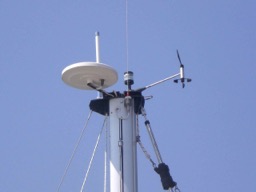
As reported previous, FCC’s delay on this issue, the 2487 days from the CTIA white paper to today’s R&O, was a lose/lose period for both sides.
The BDA manufactures faced serious offshore competition from irresponsible manufacturers who made no attempts to limit interference from their units to cellular systems as well as being denied access to normal capital from the financial community because of the risks involved when the megacorporations that are the 4 major carriers sought to have them driven from the face of the earth! The carriers also faced both continuing interference from early models of BDAs as well as current models from irresponsible manufacturers along with the knowledge that no matter what the new rules say the bad units will continue in use for several more years. THE COSTS OF FCC DELAY!!
CTIA has issued no statement as yet on the R&O while Wilson Electronics, a major manufacturer of this equipment has.
The second item dealt with an expanded “Wi-Fi” band at 5 GHZ. I put Wi-Fi in quotes since it is a registered trademark of the Wi-Fi Alliance which in the past has indicated misgivings about the FCC’s casual use of terms like “super Wi-Fi”. Also the present and probably the new FCC rules do not require the use of only IEEE 802.11 standards in any specific unlicensed bands.
The Commission press release states
The Commission proposed to make up to 195 megahertz of additional spectrum in the 5 GHz band (a 35% increase) available to unlicensed wireless devices. It also proposed to create a more flexible regulatory environment, and to streamline existing rules and equipment authorization procedures for devices throughout this band.
Unlicensed National Information Infrastructure (U-NII) devices today operate in 555 megahertz of spectrum in the 5 GHz band, and are used for short range, high speed wireless connections including Wi-Fi enabled local area networks and fixed outdoor broadband transceivers used by wireless Internet service providers to connect smart phones, tablets and laptops to the broadband network.
The proposed modifications would provide access to additional contiguous spectrum with consistent technical requirements, allowing unlicensed devices to use wider bandwidth channels, leading to faster speeds.
This spectrum current has federal users in parts of it and thus FCC and NTIA share responsibility for it. NTIA has agreed to the NPRM and may modify its position later. In or nearby the promised spectrum are present and planned uses by Intelligent Transportation Systems (ITS). Some members of the ITS community have been comparing this NPRM to the GPS/LightSquared issue although the major ITS trade association, ITS America was quite moderate and open minded in its statement.
The link to NPRM text is now here.
Docket 10-4: Why Can't FCC Finish Routine Spectrum Issues?
We have written before of the saga of Docket 10-4 and the fundamental questions it raises about the ability of FCC to do the “bread and butter” of spectrum management while it is pressed by major industry groups to work on megaissues. It is ironic that in this case it is one of the the major industry groups, CTIA, that brought this issue to FCC but apparently has now decided to focus on the major issue of spectrum reallocation. But if a major industry can not get action on this type of “bread and butter” issue in anything resembling timely resolution, imagine a startup that needs FCC action to get its business plan going. Indeed imagine the difficulty such a startup might have getting VC funding in the future if the VC community perceives FCC as being consistently dilatory.
As a reminder of the issue here, CTIA submitted the document shown above to FCC on May 1, 2006 that dealt with interference caused to cellular systems by first generation “boosters”/“bidirectional amplifiers”, often used in rural areas where cellular coverage is marginal or inadequate. CTIA sought to have such units declared illegal even though FCC had been granting them equipment authorization under questionable legal authority for several years at that point. In the document shown above was this clear statement:
![]()
The clock at the top of this post shows how many days have passed since CTIA said this was “urgent, 2405 days as this is being written. (I will stop the clock when FCC resolves this matter.)
In my previous post on this topic I proposed a method for resolving this issue using a variant of negotiateg rulemaking that will try to avoid previous failures FCC has had with this approach and which can be done within existing laws and regulations. An ex parte filing was made to insure this was in the record of the proceeding. Apparently no one has paid any attention to my suggestions as all involved argue of the detailed merits of their favorite solution and there is little sign of closure on this issue. Also all sides are continuing to be hurt by the present ambiguity: The cellular carriers continue to get interference from first generation units that can still be sold legally by irresponsible vendors and they will continue to get interference for years into the future since this equipment probably lasts for about 5 years and there is no realistic way FCC can stop the use of equipment already sold. The responsible vendors are being hurt because they are underpriced by the irresponsible vendors and because the ambiguity of their product denies them access to capital markets. As said before, a true lose/lose situation!
So FCC and participants in Docket 10-4, how long will you continue to “knock your heads against the wall” to get this resolved using the present FCC deliberative process? Am I the only one who sees that something is basically wrong here with the FCC process for handling such issues?

VZW Claimed Coverage on Chesapeake Bay
So cellular industry, if you really think this use is illegal try to FCC to take enforcement action against me. (Note that at present FCC deals with even cellular and GPS jammer sales with NAL actions that probably rarely result in any payments of penalties.)
Docket 10-4: 6+ Years of FCC Inaction Turns an Emerging Interference Issue into a "Lose/Lose" Situation
On November 2, 2007, CTIA, the Wireless Association (CTIA) filed a Petition for Declaratory Ruling (CTIA Petition) regarding the proper use of signal boosters in Commercial Mobile Radio Services (CMRS).
Hence there was no explanation for the over 2 year delay in responding to this petition from a very powerful trade association. If a trade group as powerful as CTIA can be ignored for 2+ years, one wonders how much attention a mere startup company would get? Since the 1st Amendment guarantees the right “to petition the Government for a redress of grievances” and the APA reiterates this right, "Each agency shall give an interested person the right to petition for the issuance, amendment, or repeal of a rule" (5 USC 553(e)), it is puzzling that FCC in recent decades have given most petitions such little attention. When Bob Foosaner was head of WTB’s predecessor in the 1980s, he argued pragmatically that petitions had to be either dismissed or put out for public comment in about a month, for otherwise the embarrassment of inaction impacts the real options.
(While the delay from the filing of the petition to the FCC PN was 26 months, the petition included as an attachment a “WHITE PAPER ON THE HARMFUL IMPACTS OF UNAUTHORIZED WIRELESS REPEATERS” that had been submitted to FCC on May 1, 2006! Thus CTIA had formally contacted FCC about the interference from bidirectional amplifiers almost 4 years before FCC took any public action, such as asking for comments, on this issue! Below is a section heading from the CTIA 2006 white paper)
![]()
Unfortunately CTIA’s documents failed to recognize that although early amplifiers sometimes caused interference, they were also of real benefit to consumers who suffered from marginal cellular coverage especially in rural areas. They also were very popular among public safety users, although they also complained about interference from early models (still permitted due to the impasse in this proceeding). Thus the total prohibition of amplifiers that CTIA sought was unreasonable, although it took a long time for key CTIA members to come to this realization.
We have argued here previously that emerging interference issues are inevitable in the dynamic wireless area and need to be addressed and “nipped in the bud” before they get worse. The 10+ year delay of dealing with police radar detector interference to VSAT terminals is an example of ignoring a problem until it becomes unmanageable and then putting burdens on all involved to solve it. (FCC has never even acknowledged publicly that it was aware of this problem for 10+ years before taking action!)
So what has happened in the 6+ years since CTIA’s white paper was filed? Since there has been no regulation adopted to address the issue of amplifiers that oscillate like PA systems with a microphone too close to the speaker, low end manufacturers still sell such amplifiers in the US market and presumably continue to cause interference. High end US-based manufacturers have switched to designs that are protected from oscillations and do not cause this interference - although the present designs they might cause much less frequent problems through more obscure mechanisms. However, due to regulatory inaction by FCC, low end manufacturers can continue to sell early generation units that can and do oscillate and cause interference to cellular systems.
So,
- Cellular operators continue to get interference from existing and new amplifiers that come from low end manufacturers and which continue to be legal in the current regulatory impasse.
- Legitimate amplifier manufacturers with updated designs that don’t oscillate suffer price competition from low end makers who undersell them with equipment that threatens cellular systems AND during the pendency of this rulemaking have limited access to new capital for improved equipment design due to regulatory uncertainty during the tendency of this proceeding. At least one of these manufacturers actually makes the units in a small US town in a “red state”. One new US entrant who contacted me several years ago about entering the market with an oscillation-protected design never got the financing he needed - probably due to regulatory uncertainty.
A true “lose/lose” situation! Due to the deadlock both sides (as well as the public) suffer!
Meanwhile the CTIA membership can’t make up its mind what the powerhouse should press for and meanders like a rudderless ship. A recent filing has a table summarizing the positions of the various carriers with respect to the “Joint Proposal” of Verizon Wireless and Wilson Electronics for reasonable regulation of amplifiers.
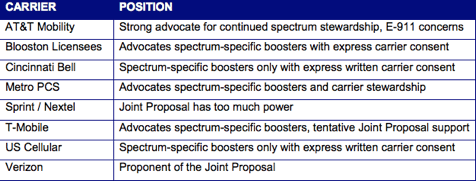
Comparison of carrier positions from Millard/Raines Partnership 5/12 filing
What is needed here is some real leadership either in the cellular industry or at FCC. While reasonable people can disagree on the best solution, most will agree that a solution is in everyone’s interest. Perhaps FCC should send an ultimatum to the industry to come up with a unified position within 2 months or else FCC will moved directly to a decision based on the current record.
It is nice to try to be everyone’s friend, but that is not a good way to run a regulatory agency in a fast moving technical area. Some times you just have to make a decision and move on.
It has been over 6 years since CTIA said
![]()
Now is the time for action! This problem is not “rocket science”, rather the impasse reflects a basic problem in FCC spectrum policy: an unwillingness to tackle basic Title III issues that are part of the Commission’s basic charter.
If the FCC IG had a good understanding of his role, he would investigate how this mess developed at FCC so the Commission can learn from these events. Don’t hold your breath, though.
So let me make a modest suggestion to resolve this impasse:
In effect the Commission is now using an informal nontransparent version of negotiated rulemaking (neg/reg) to resolve this problem. It is waiting for the parities to reach consensus - they aren’t.
As I indicated previously, while neg/reg has been successful in Executive Branch agencies, it has never been successful at FCC. I believe the reason is that neg/reg depends on a fear by all affected parties involved that the agencies will quickly make its own decision if negotiations fail to reach a consensus. In a multimember commission like FCC the parties generally feel they can just take an impasse to the 8th Floor and start all over again. Thus I propose that the Commission quickly convert this proceeding to a formal negotiated rulemaking one with a short time frame, say 60 days AND delegate, pursuant to Section 5(c) of the Communications Act, the authority to issue an NPRM and a Report & Order to one commissioner who is solely responsible for the negotiated rulemaking. Thus the neg/reg committee members will see that escalating the issue to 8th Floor politics is pointless and it is time to make real concessions while the issue is under their control. Hopefully just deciding to act this way may pressure the parties involved to reach a timely consensus without the formality of neg/reg and lead directly to timely resolution of these issues.
This type of issue should not take more than 6 years to resolve! The delay highlights a major problem in Title III policy development at FCC: an unwillingness to make timely decisions on the bread and butter issues that are necessary for efficient spectrum policy. If the commissioners would like to spend their time on grander issues, they should develop alternatives to deal with these issues. Section 5(c) gives they great flexibility in improving FCC throughput. Resolving all issues with 5 presidential appointees is not really practical in today’s complex environment.
When FCC first met in 1935, it created 3 parallel committees of (the then 7) commissioners (called “divisions” at the time) so the 3 committees could work in parallel. Today’s industry and technology is much more complex than in 1935 and the 1946 APA makes decision making much more complex. The delay in this proceeding shows that the present structure just isn’t working and all parties are suffering as a result.
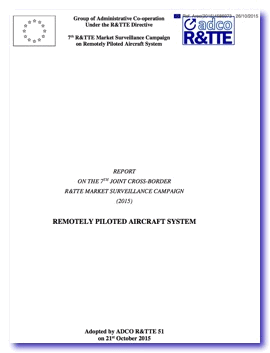
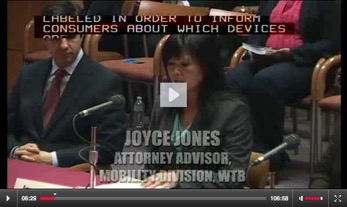
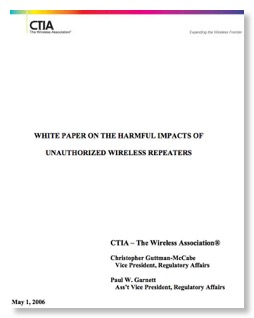




![Validate my RSS feed [Valid RSS]](valid-rss-rogers.png)

